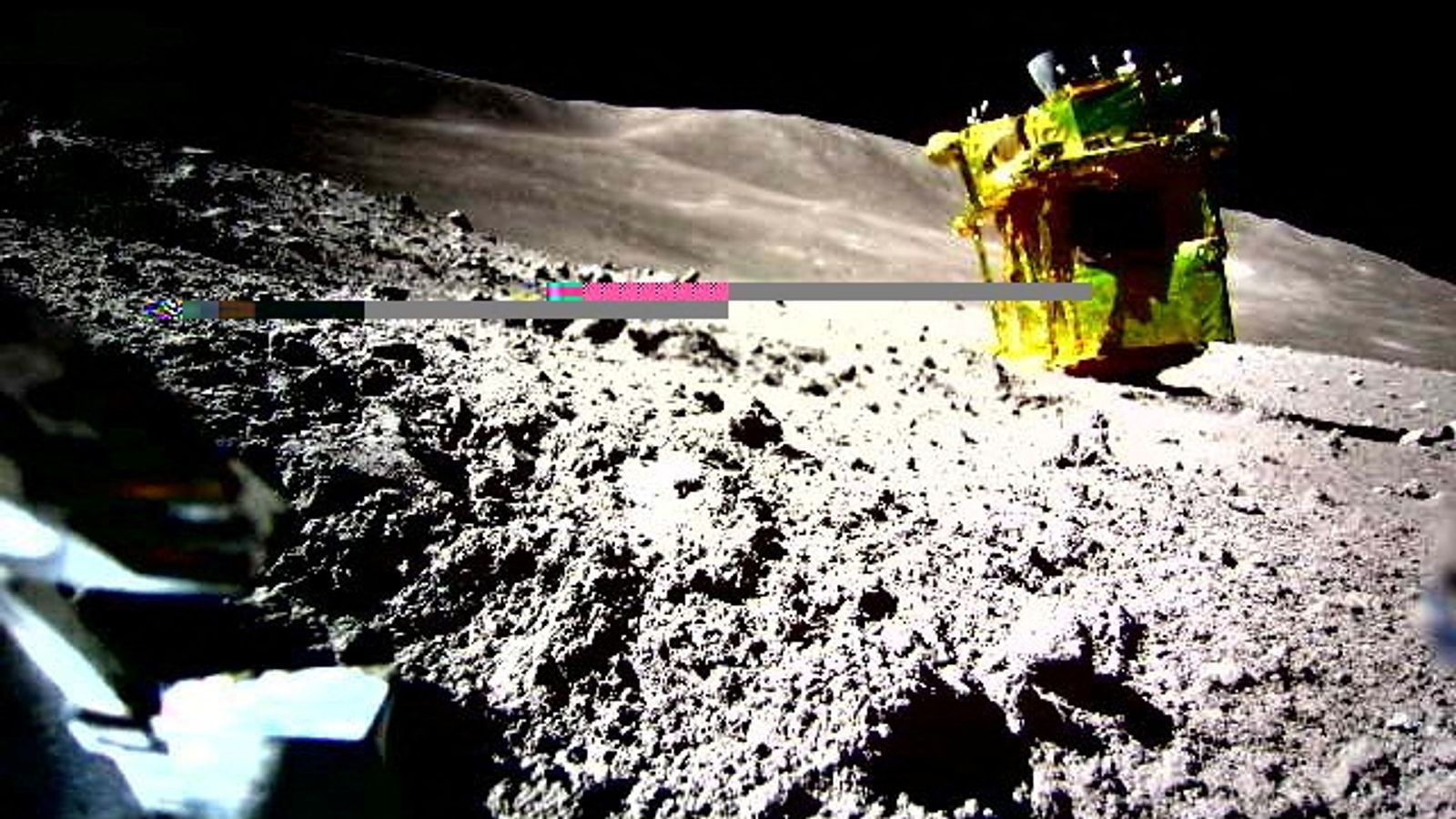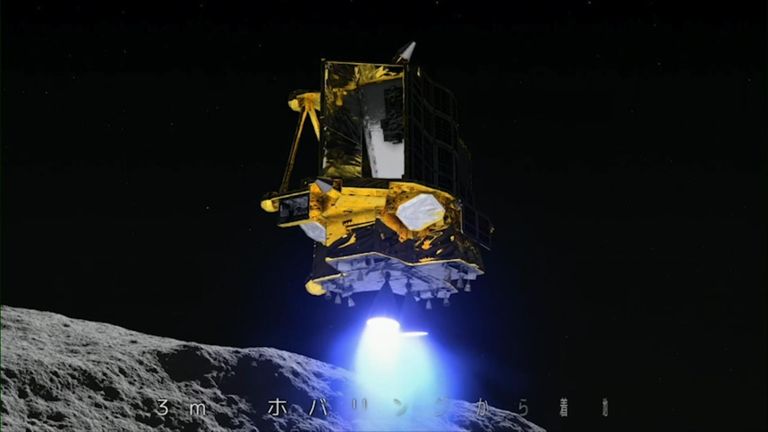Japan’s first moon lander has responded to a signal from Earth in what has been hailed as a “miracle” by the country’s space agency.
The response, received late on Sunday, suggests the Smart Lander for Investigating Moon (SLIM) craft survived a second freezing weeks-long lunar night, when temperatures can plunge to -170C.
The Japan Aerospace Exploration Agency (JAXA) said it was a “miracle” because the probe was not designed to survive the lunar night.
The SLIM probe, dubbed the “moon sniper”, made a “pinpoint” touchdown on 19 January – earning Japan a place in the history books as the fifth country to successfully place a probe on the moon.
It touched down within 55m (180ft) of its target, but a problem involving its solar panels put the mission in jeopardy.
A likely failure with one of the craft’s two main thrusters meant it landed the wrong way up – with the panels facing away from the sun.
This forced the craft to rely on its battery, which had a charge of 74% when it landed.
As battery power dwindled, mission managers had no choice but to put the probe into hibernation after just three hours.
The craft eventually regained power more than a week after the historic moon landing.
JAXA said communication with the probe on Sunday was “kept short” because it was still “lunar midday” and SLIM was at a very high temperature – thought to be around 100C.
The agency posted on X: “Last night a command was sent to #SLIM and a response received, confirming the spacecraft has made it through the lunar night and maintained communication capabilities.”
It added: “Communication with #SLIM was terminated after a short time, as it was still lunar midday and the temperature of the communication equipment was very high.”
The agency is now preparing to make contact again, once the vehicle has cooled.
Despite the setbacks, the mission has been hailed a success, having achieved its primary objective of landing the craft within a 100m diameter target zone.
The technology used to achieve the feat could prove to be a powerful tool for future exploration of possible sources of fuel, water and oxygen.
Read more from Sky News:
US airman dies after setting himself ablaze in ‘genocide’ protest
Everton Football Club’s 10-point deduction reduced
Cruise ship blocked from docking over ‘health risks’
Most moon landings, which until last month had only been achieved by crafts from the United States, Russia, China and India, aim for a spot within an accuracy of several kilometres.
Hitoshi Kuninaka, the head of JAXA’s research centre, said the SLIM probe’s 100m target had “most certainly achieved”, according to initial data, though its specific location won’t be known for a month.
Click to subscribe to the Sky News Daily wherever you get your podcasts
SLIM touched down just over a month before a US lander successfully landed on the moon for the first time in more than 50 years on Friday, in what was hailed as a “giant leap forward for all of humanity”.
The Odysseus lander, the first ever privately-owned craft, arrived on the moon’s surface after a nail-biting descent, landing closer to its south pole than any other craft in history.


